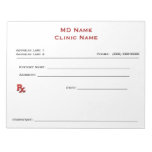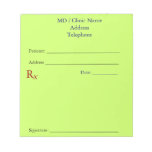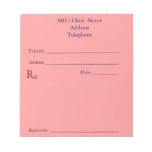Physicians spend 27% of their time in direct clinical encounters with patients and 49.2% of their time on tending to the electronic health record and desk work.
Below are some ways to optimize the efficiency of staff which, in turn, will allow physicians and other providers to spend more meaningful time on billable activities.
Develop Checklists
Leave nothing to chance. Create simple checklists for each function— from the beginning of the day and throughout the day — including the duties and tasks for nurses, medical assistants and receptionists. This creates value even for routine tasks. For many functions, a checklist can serve as both a statement of expectations and a handy reminder tool.2
Delegate Appropriately
Increase the amount of time that physicians and other providers have to spend with patients by reducing the time they need to devote to tasks that don’t require their involvement. As appropriate, it is important that everyone on staff works to the top of their license, certification, expertise and/or skills. Some practices find that hiring a scribe can boost physician productivity and satisfaction. Typically, a scribe position can pay for itself if it allows an additional two patients to be accommodated each day.
47 work weeks, $100 reimbursement per encounter, 4-work days in the office per week, 2 patient encounters per day, equates to $37,600 in additional revenue. Because costs are nearly 100% fixed (i.e., they do not proportionately increase based on additional patient encounters), this equates to $32,000 to $35,000 in contribution to the position of a scribe. These data are provided as samples only.
Allow Flexibility
Business office hours don’t have to mirror those of the clinical operation. Many employees will leap at the opportunity to work earlier or later hours than the clinicians. Open the door to flex time and regular part-time shifts that can be scheduled around child-care duties and other personal obligations.
Flexibility may be an independent practice’s secret weapon to attracting and retaining great employees.
Amid the ongoing consolidation and centralization of healthcare services, the independent practice has a secret weapon: the quality of its staff. That said, one cannot just expect a fine-tuned team of high-performing employees to just come about. To stand out in a competitive market and create the practice that patients choose, high-performing practices put the time in to train staff and provide them with the technological solutions they need to succeed.
Independent practices have innate qualities that allow them to handle the challenges of today’s changing reimbursement environment—but only if they are willing to invest time and thought into new revenue opportunities, improving how they collect payments owed by patients, implementing strategies to avoid and manage denials, and deploying staff and technology solutions for optimal efficiency. In order to maximize payments in 2018 – and beyond - independent practices must be alert enough to recognize the changing currents and nimble enough to successfully execute new strategies to stay on top of the revenue cycle.




Their main objective is to provide all sorts of assistance and mental health care, particularly for the most underprivileged and vulnerable section of the society. church's chicken diabetic
ReplyDelete